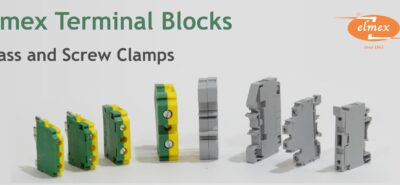Low Voltage Control Panels: Functionality and Applications of Making Things Work
In a rapidly evolving world, the seamless and efficient distribution of electrical power has become a linchpin for the smooth operation of various sectors, including, but not limited to, industrial setups and commercial establishments. At the very core of this intricate network lies Low Voltage Control Panels, a critical element that not only streamlines power distribution but significantly enhances the safety and efficiency of electrical installations.
Through this detailed exploration, we seek to demystify the nuanced world of Low Voltage Panel, delineating their functionality and pinpointing their critical applications in facilitating the seamless operation of complex systems.
Understanding Low Voltage Control Panels

1.1 Definition and Importance
Low Voltage Control Panels, commonly abbreviated as LVCPs, operate as centralized hubs that coordinate the distribution and management of electrical power across various infrastructures. This electrical control panel assembly is intricately designed and engineered to ensure that electrical systems function without a hitch, thereby becoming a cornerstone in modern power networks.
1.2 Working Principle
Serving as the nerve center of electrical infrastructure, control panels manage the flow of electricity systematically, controlling the supply in line with the demands of different connected devices and systems. This power distribution and control not only prevents overloads and short circuits but ensures the longevity and efficiency of various electrical assets. Low voltage control box is, without a doubt, essential for low voltage distribution.
Low Voltage Switchgear

2.1 Definition
Low Voltage switchgear, which functions at a maximum of 1KV, stands as a critical component in the heart of control panels. The LV switchgear encompasses electrical disconnect switches, fuses, or circuit breakers, playing a vital role in controlling, protecting, and isolating electrical equipment.
2.2 Functionality
Low voltage switchgear encompasses and forms LV control panels which help in controlling and maintaining low voltage instruments and equipment such as motors, building lighting, HVAC and renewable energy equipment. They offer both protection and efficiency by reducing downtime and enhancing the overall productivity of such electrical operations.
2.3 Importance
In a power management system, the role of low voltage switchgear panels is central. It provides a centralized control and protection mechanism for electrical equipment, thereby amplifying the efficiency and lifespan of the entire system.
Components of Low Voltage Control Panels
The intricate network of components within Low Voltage Control Panels forms the bedrock of their functionality and efficiency:
3.1 Breakers
Molded Case Circuit Breakers (MCCBs): A vital safeguard against potential overload and short circuits, ensuring the seamless operation of the low voltage network.
Air Circuit Breakers (ACBs): Particularly used in circuits with higher power ratings, offering both control and protection functionalities.
3.2 Relays
Overcurrent Relays: Specifically designed to prevent currents that exceed predefined limits, averting potential system damages. The power distribution equipment you need!
Earth Fault Relays or Earth Leakage Relays: Specialized devices that detect earth faults, hence preventing system damages and ensuring safety. They are must-haves for low voltage distribution systems.
3.3 Contactors
Power Contactors: Primarily utilized for toggling electrical circuits on or off, thereby providing control capabilities.
Auxiliary Contactors: Work indirectly in controlling the circuits enhancing safety protocols in the system.
3.4 Motor Protection Circuit Breakers
These are integral in protecting motors and similar devices from overloads and phase failures, thus promoting prolonged life and efficient functioning.
3.5 Busbars
Critical for facilitating the effective distribution of electrical power through branching within the panel, enhancing the safety and performance of the system. They are an essential part of every low voltage switchboard.
Features and Benefits
Low voltage distribution panel encapsulate a range of features and benefits that augment their functionality:
4.1 Safety and Energy Efficiency

Protection against Electrical Hazards: These panels are primed to offer unparalleled protection against potential electrical hazards, fostering a safe operational environment.
Safe Operation of Electrical Devices: By modulating the power flow, they ensure the safe operation of various electrical devices connected to the system.
Enhanced Energy Management: Their intelligent design aids in energy management, fostering sustainability and cost savings.
4.2 Customized Solutions:
One of the most appealing features of LVCPs is their adaptability. Unlike a one-size-fits-all solution, these panels can be tailored to address specific operational challenges or seamlessly integrate with unique systems.
This customization is achieved through a careful selection of components, the layout of the panel, and the inclusion of specific functionalities that cater to a particular need. The result is a highly efficient system that is fine-tuned to the requirements of a given application, be it in an industrial plant, a commercial building, or a specialized facility.
4.3 Diagnostic Capabilities:
As technology advances, so does the intelligence of control panels. Modern LVCPs come equipped with diagnostic capabilities that provide invaluable insights into the health and performance of the connected systems. This diagnostic prowess aids in:
· Predictive Maintenance: The essence of predictive maintenance is to act before a failure occurs. The diagnostic tools embedded within LVCPs allow them to monitor the condition of equipment continuously.
By analyzing this data, operators can identify early signs of wear and tear or potential malfunction. This proactive approach ensures that maintenance can be scheduled during non-peak hours, preventing unexpected downtimes and thus saving costs and promoting system efficiency.
· Real-Time Monitoring: In today’s fast-paced industrial environments, waiting for periodic checks or manual inspections can lead to expensive downtimes or even catastrophic failures.
Real-time monitoring ensures that all critical parameters are watched around the clock. Any deviations from the norm trigger immediate alerts, allowing operators or automated systems to take corrective actions almost instantaneously.
For instance, if a motor is overheating or there’s a sudden surge in power, the LVCP will notify the relevant personnel or even shut down parts of the system to prevent damage. This feature not only protects expensive equipment but also ensures that systems run at their optimal efficiency.
Applications
Low-voltage power distribution panels find a wide array of applications across different sectors, namely:
5.1 Industrial Usage
Manufacturing Units: These panels streamline power distribution in manufacturing units, ensuring the seamless operation of various machinery and equipment.
Power Plants: In power plants, low voltage panel boxes manage complex power distribution networks effectively, maintaining a constant and stable power supply.
5.2 Commercial Infrastructure
Office Buildings: In office buildings, these panels ensure the smooth functioning of various electrical systems, contributing to a safe and efficient work environment.
Shopping Malls: In shopping malls, they oversee extensive electrical networks, ensuring safety and efficiency in daily operations.
5.3 Renewable Energy Systems

Solar Power Plants: In solar power plants, LVCPs manage power distribution aptly, optimizing the utilization of generated power.
Wind Farms: In wind farms, they oversee the effective distribution of generated power, ensuring seamless and efficient system operation.
Frequently Asked Questions (FAQs)
6.1 What is the primary function of Low Voltage Control Panels?
Low Voltage Control Panels primarily function as centralized units that facilitate the controlled and efficient distribution of electrical power in various infrastructures. They play a crucial role in preventing electrical hazards and ensuring the smooth operation of connected devices and systems.
6.2 What components are typically found inside a Low Voltage Control Panel?
Typically, a Low Voltage Control Panel houses several critical components, including breakers (like MCCBs and ACBs), relays (such as overcurrent and earth fault relays), contactors (power and auxiliary contactors), motor protection circuit breakers, and busbars. These components work in unison to enhance the functionality and safety of the panel.
6.3 What are the notable benefits of using Low Voltage Control Panels?
Low Voltage Control Panels offer numerous benefits, including improved safety by protecting against electrical hazards, enhanced energy efficiency through optimal power distribution and facilitated energy management, customization to meet specific requirements, and advanced diagnostic capabilities for predictive maintenance and real-time monitoring.
6.4 In what sectors are Low Voltage Control Panels predominantly used?
Low Voltage Control Panels find extensive applications across various sectors, including industrial setups (like manufacturing units and power plants), commercial infrastructures (such as office buildings and shopping malls), and renewable energy systems (including solar power plants and wind farms), among others.
6.5 How do Low Voltage Control Panels contribute to energy efficiency?
Low Voltage Control Panels contribute to energy efficiency by facilitating optimal power distribution, thereby minimizing losses and promoting sustainable energy management. Their intelligent design and real-time monitoring capabilities help in avoiding wastages and optimizing the usage of electrical power.
Conclusion
Low Voltage Control Panels stand as an indispensable component in contemporary electrical systems, offering not just efficient power management but also safeguarding various devices and infrastructures.
Through its versatile components and sophisticated functionalities, it plays a significant role in fostering a reliable and efficient power distribution network. As we transition into a future where energy management becomes increasingly pivotal, these panels are set to play a central role in promoting safety, efficiency, and sustainability across a spectrum of power systems globally.
If you want to ensure seamless and secure functionality of your electrical devices and networks, buying great quality control panel accessories is mandatory. GoSwitchgear is a one stop electrical store where you can buy everything as per your electrical needs. Under voltage relay, overvoltage measuring devices, or other overvoltage protection equipment, you can find them all here.










Leave a Reply